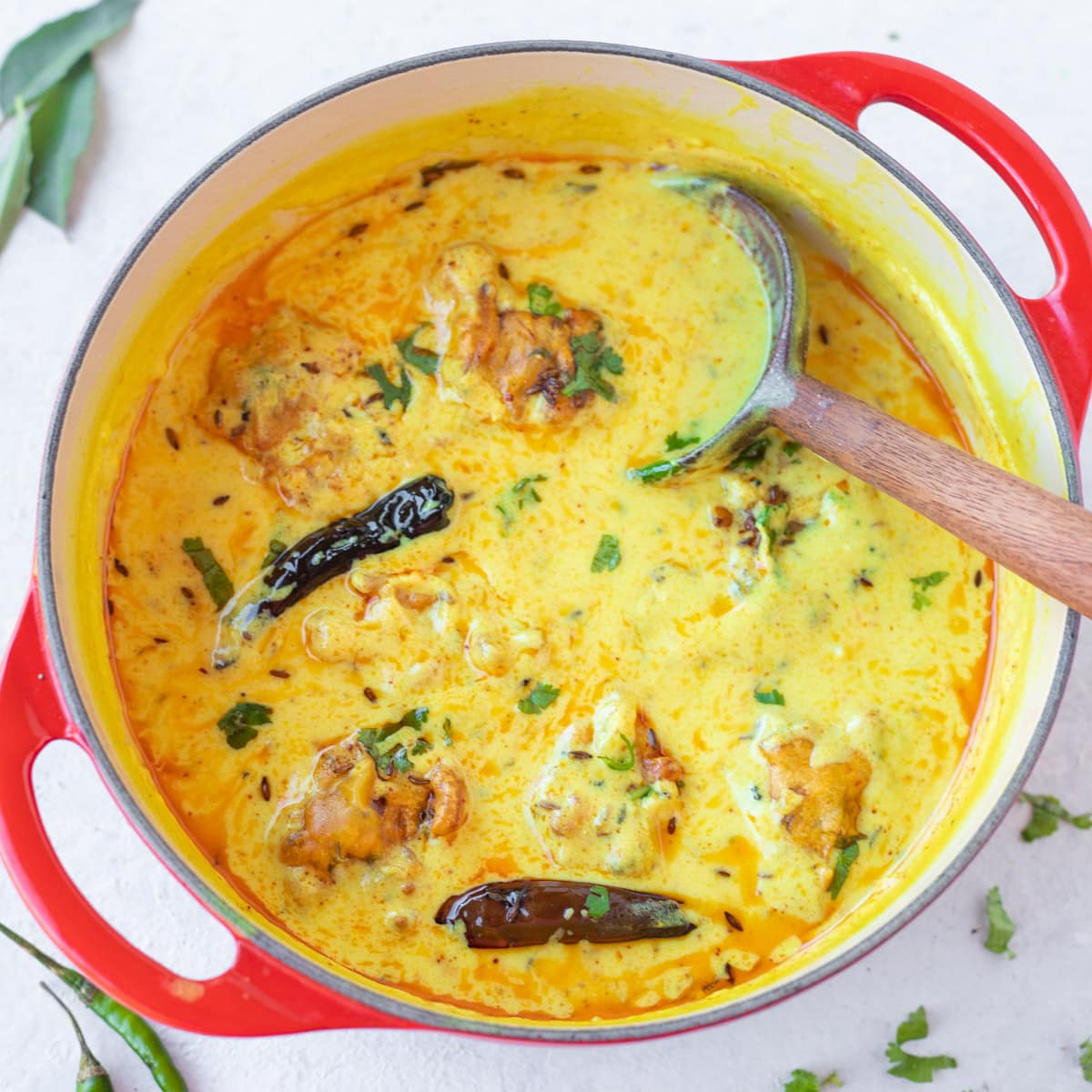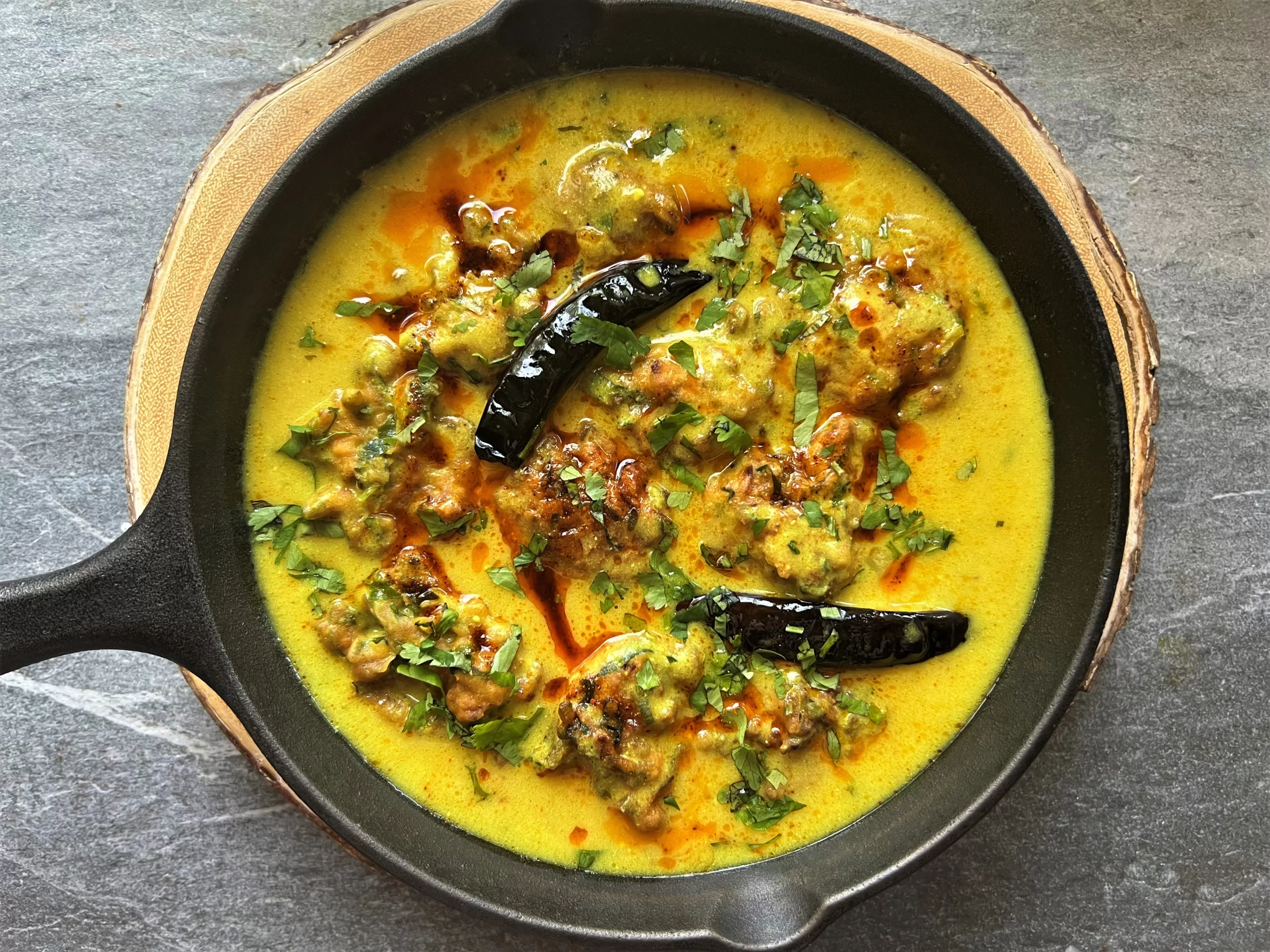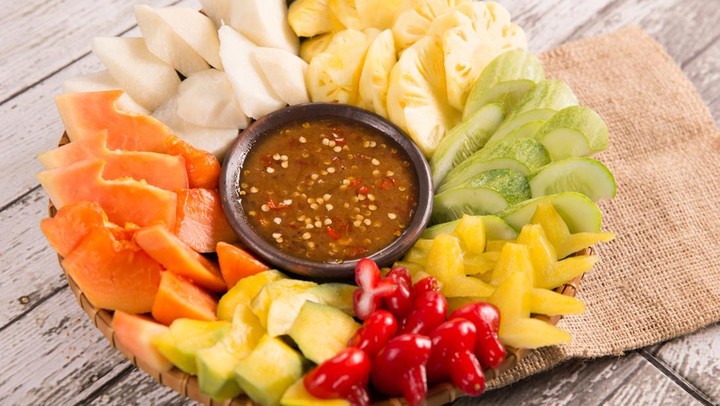Kadhi, a creamy curry beloved in India for its distinctive flavor, is known throughout the subcontinent. The yogurt-based dish derives its unparalleled richness from besan flour and an assortment of aromatic components. Varying immensely by locale, innovative renditions of the Kadhi evolve across borders, each imparting novel characteristics to the beloved comfort food. Whether relished solo or alongside companions like rice and roti, the Kadhi nourishes with complex subtleties and comforting textures on each sampling.
Its ability to satisfy both body and soul serves as a testament to India’s culinary diversity, passed through generations as families craft unique versions of the nostalgic staple. For many, kadhi’s familiar essence continues to represent traditions and heritages woven into dishes that warm both stomach and heart.

The History and Origin of Kadhi
The origins of kadhi can be traced to an earlier time when dahi and gram were popular Indian foods. Dahi has been an integral part of the Indian diet for millennia since it is soothing and promotes digestion. As a result, it is likely that recipes for dahi-based dishes have been tested and devised through centuries. Gram gram flour, ground chickpeas, was valued for their high protein content and employ locally.
The kadhi recipe most likely resulted from the necessity to utilize superabundant dahi in the dish and create something filling that allowed the remainders to be used quickly. However, by the course of time, it had gotten more complicated, with various regions utilizing local ingredients and spices to create their modifications.
Nutritional Benefits of the Kadhi
The Kadhiisn’t just delicious, it also has multiple nutrients. Starting with the main ingredient, yogurt, which is filling with probiotics, helping with digestion and giving the body much-needed substance to build good bacteria. In addition, yogurt also contains calcium, protein, and essential vitamins. The main ingredient, besan or the gram flour, is protein-wise, high in iron and fiber, and is always a good part of any diet. Moreover, The added spices are turmeric, cumin, and fenugreek; they all have antioxidant and anti-inflammatory benefits. Therefore, Kadhi is a mood lightening and a nutrition-filled meal.

The Cultural Significance of Kadhi
In conclusion, kadhi is one of the traditional dishes and has unique cultural significance in Indian cuisine. Hindi term for buttermilk is the Kadhi, and its punjabi variation is the Kadhi. People prepare it mainly for special events and festivals and celebrate it with others. Moreover, cooking the situstoto Kadhi not only represents a unique delicacy but also an expression of affection, patience, and devotion. It often becomes a Sunday schedule for many people in their daily menu and helps the whole family to eat and enjoy together.
Additionally, it is much more even cooking or making as it heals people with a sense of belonging and promotes cultural tradition. Since India is a diverse country, each state has its versions of kadhi.
Varieties of Kadhi
Kadhi varies widely across different regions of India, each with its unique ingredients and cooking methods. Some of the most popular variations include:
Punjabi Kadhi
Different regions of India have their versions of the Kadhi, but the most famous one is probably the Punjabi variety. This version has a thick, creamy texture and bold flavors. It is ideal for adding pakoras, which give the dish a pleasant crunch. The base is yogurt and gram flour, with spices like turmeric, cumin, coriander, and fenugreek. The pakoras use gram flour, onions, and spices and are fried to a golden color before being added to the curry. Once the kadhi has been prepared, it is simmered until the flavors meld and transform into the dish’s rich curry version!
Gujarati Kadhi
Gujarati kadhi, on the other hand, is more refined and just slightly sweet, in keeping with the Gujarati preference for harmony among flavors. Gujarati the Kadhi is frequently served without pakoras to emphasize the yogurt and spice flavors. The kadhi is comprised of a tabla with yogurt, besan, and seasoned with a little jaggery or sugar. In a separate pan, cumin, rai, and curry leaves are tempered in ghee or oil. The kadhi is served warm, and also has khichdi on a rice.
Rajasthani Kadhi
Rajasthani kadhi is known for its tangy and spicy flavors, often enhanced with the addition of red chili powder and dry red chilies. This version is thicker and more robust, reflecting the bold culinary style of the region. The base is made with yogurt and gram flour, spiced with turmeric, red chili powder, and asafoetida. The dish is tempered with mustard seeds, cumin seeds, and dry red chilies, adding a smoky, spicy flavor. Rajasthani kadhi is often enjoyed with bajra roti or steamed rice.
Maharashtrian Kadhi
Maharashtrian kadhi, also known as sol kadhi, is unique in that it uses kokum (a type of fruit) instead of yogurt. This version is popular in the coastal regions of Maharashtra and Goa, where kokum is abundant. Sol kadhi is light, refreshing, and slightly tangy, often enjoyed as a cooling drink or a light curry. The base is made with kokum extract, coconut milk, and spices such as cumin, green chilies, and garlic. Sol kadhi is typically served with rice or enjoyed as a palate cleanser after a spicy meal.
Sindhi Kadhi
Sindhi kadhi is a hearty, vegetable-laden version from the Sindhi community. This version uses a variety of vegetables, such as okra, drumsticks, and potatoes, making it a wholesome, nutritious meal. The base is made with gram flour and water, spiced with turmeric, red chili powder, and cumin seeds. The vegetables are added to the kadhi and simmered until tender, creating a rich, flavorful curry. Sindhi kadhi is often enjoyed with steamed rice and papad.
The Classic Punjabi Kadhi Recipe
Creating the perfect Punjabi kadhi requires a balance of spices and the right cooking techniques. Here is a traditional recipe for making this delicious dish:
Ingredients:
- For the Kadhi:
- 2 cups yogurt
- 1/2 cup gram flour (besan)
- 5 cups water
- 1 teaspoon turmeric powder
- 1 teaspoon red chili powder
- Salt to taste
- 2 tablespoons oil
- 1 teaspoon cumin seeds
- 1 teaspoon mustard seeds
- 1/2 teaspoon fenugreek seeds
- 1 pinch asafoetida
- 2 dried red chilies
- 10-12 curry leaves
- Fresh coriander leaves for garnish
- For the Pakoras:
- 1 cup gram flour (besan)
- 1 large onion, thinly sliced
- 1 teaspoon cumin seeds
- 1 teaspoon carom seeds (ajwain)
- 1/2 teaspoon red chili powder
- Salt to taste
- Water as needed
- Oil for frying
Method:
- Prepare the Pakoras: In a bowl, combine gram flour, sliced onions, cumin seeds, carom seeds, red chili powder, and salt. Add water gradually to form a thick batter. Heat oil in a deep frying pan. Drop spoonfuls of the batter into the hot oil and fry until golden brown and crispy. Drain on paper towels and set aside.
- Make the Kadhi Base: In a large mixing bowl, whisk together yogurt and gram flour until smooth. Add turmeric powder, red chili powder, and salt. Gradually add water, whisking continuously to prevent lumps.
- Cook the Kadhi: Heat oil in a large pan. Add cumin seeds, mustard seeds, and fenugreek seeds. Once they start to splutter, add asafoetida, dried red chilies, and curry leaves. Sauté for a minute. Pour the yogurt mixture into the pan, stirring constantly to prevent curdling. Bring to a boil, then reduce heat and let it simmer for 20-30 minutes, stirring occasionally.
- Add the Pakoras: Add the fried pakoras to the kadhi and let them simmer for another 10 minutes, allowing them to soak up the flavors.
- Garnish and Serve: Garnish with fresh coriander leaves and serve hot with steamed rice or roti.

The Regional Variations of Kadhi
Different regions in India have their own unique ways of preparing kadhi, each adding a distinct flavor and character to the dish. Here are a few more regional variations:
Bihari Kadhi
Bihari kadhi is a tangy and spicy version from the state of Bihar. This kadhi is typically served with rice and is made with yogurt, gram flour, and a blend of spices including mustard seeds, cumin seeds, and fenugreek seeds. It is often garnished with fried green chilies and fresh coriander leaves. Bihari kadhi is known for its bold flavors and is a favorite during the festive season.
Himachali Kadhi
Himachali kadhi, from the mountainous regions of Himachal Pradesh, is a milder version with a distinct sour taste. This kadhi is made with yogurt, gram flour, and a blend of local spices. It is often garnished with a generous amount of ghee (clarified butter) and fresh coriander leaves. Himachali kadhi is usually served with rice or roti and is a comforting dish during the cold winter months.
Hyderabadi Kadhi
Hyderabadi kadhi is a unique version that includes a variety of vegetables and is spiced with a blend of aromatic spices. This kadhi is made with yogurt, gram flour, and vegetables such as okra, eggplant, and potatoes. The spices used in Hyderabadi kadhi include cumin seeds, mustard seeds, fenugreek seeds, and a mix of ground spices. The dish is garnished with fresh coriander leaves and served with rice or roti. If you enjoyed reading this article, please consider reading our article about the Magnetic Charger.





